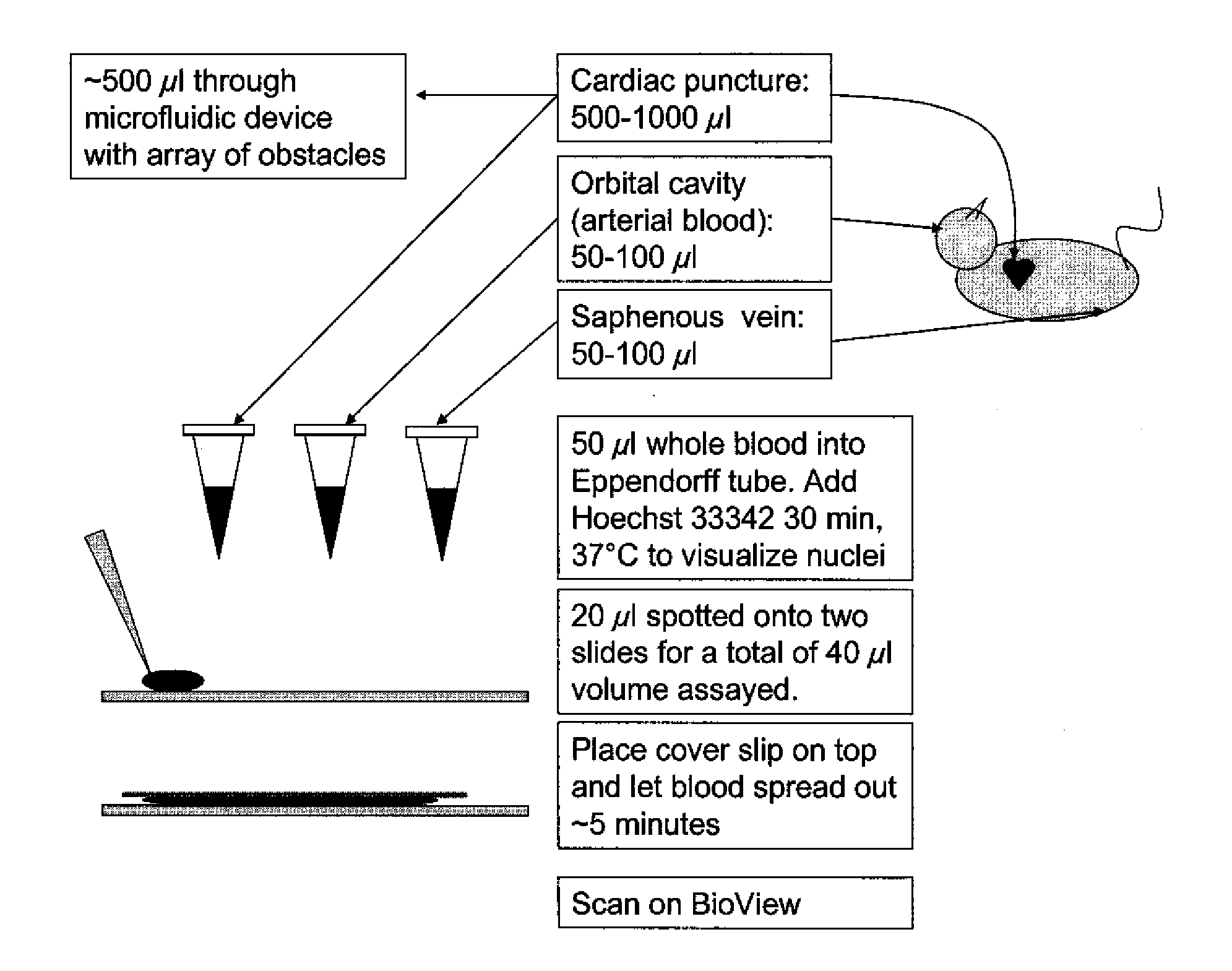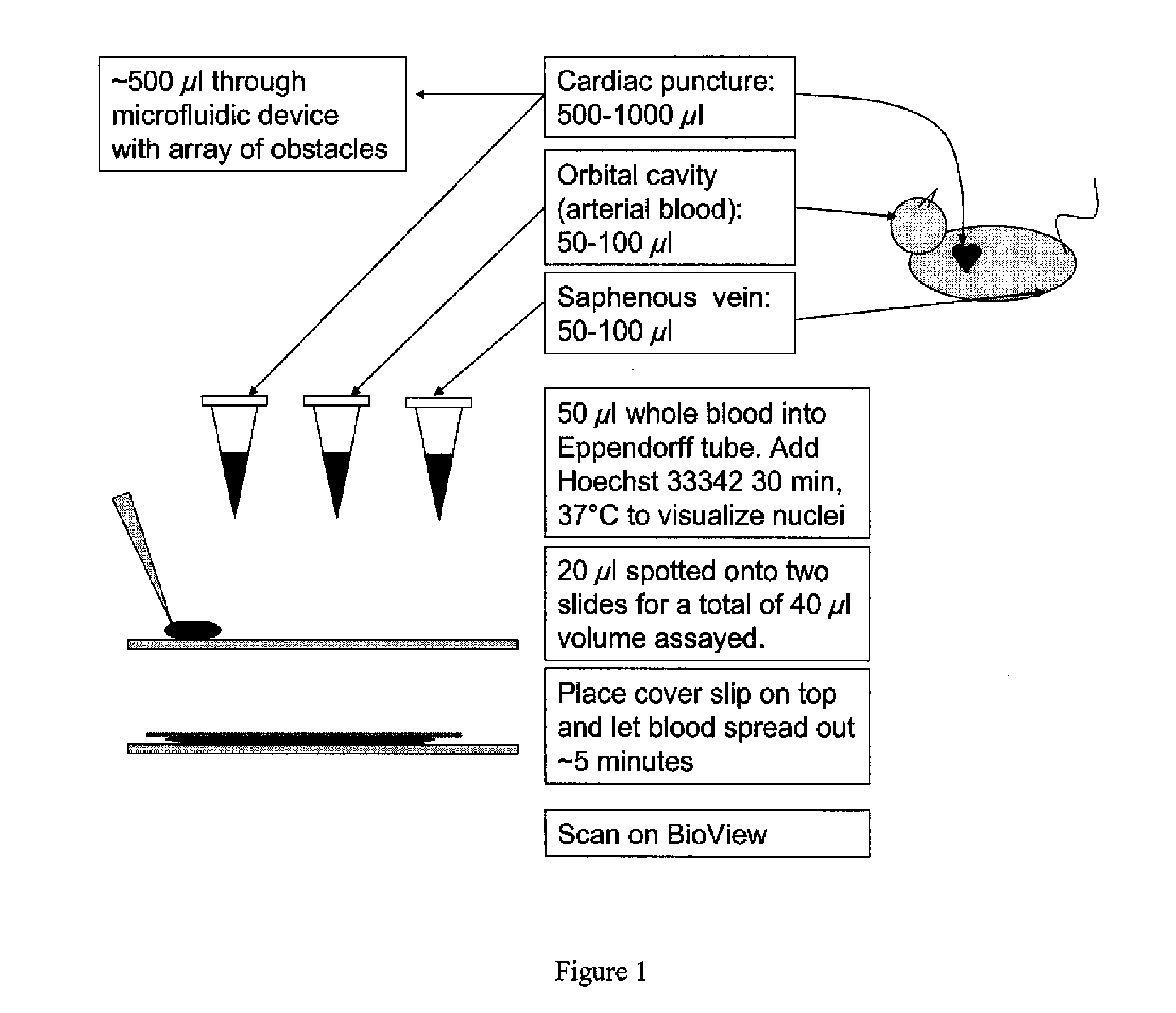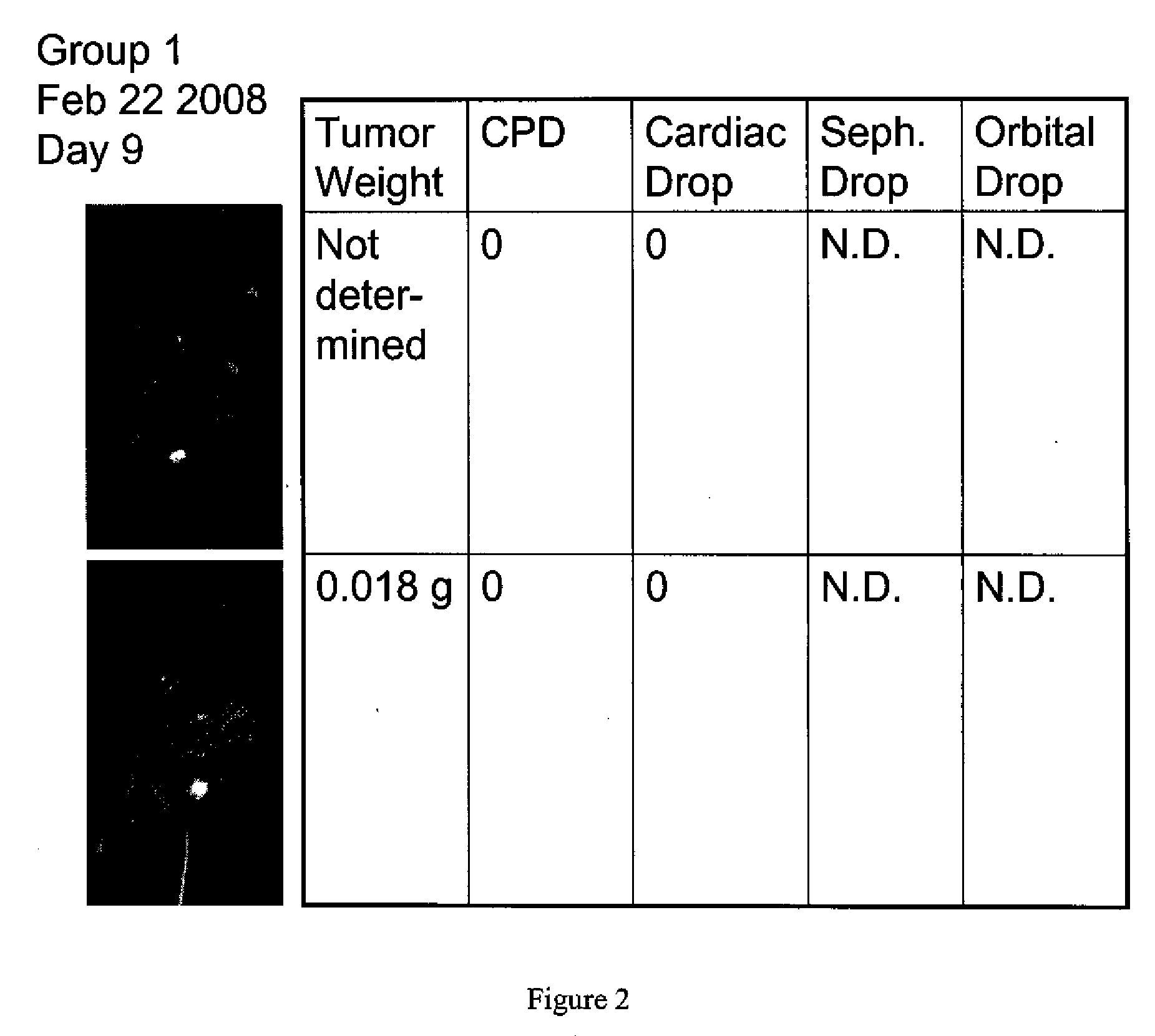Methods for Diagnosing Cancer Using Samples Collected From A Central Vein Location or an Arterial Location
a central vein or arterial location technology, applied in biochemistry equipment and processes, laboratory glassware, instruments, etc., can solve the problems of many cancers going undetected and damaging healthy tissu
- Summary
- Abstract
- Description
- Claims
- Application Information
AI Technical Summary
Benefits of technology
Problems solved by technology
Method used
Image
Examples
example 1
[0033]A mouse study evaluating three different bleed sites were for recovery of circulating tumor cells (CTC) was performed.
[0034]Sample Collection
[0035]At two time points, three groups of mice, including two positive control mice and one negative control mice, were sampled. Positive control mice were subjected to injection of GFP producing tumors. Blood samples were obtained via a saphenous vein, a retro-orbital bleed (arterial blood) and cardiac puncture. An illustration depicting the locations for blood sampling is shown in FIG. 1. One group of mice was terminated and primary tumor and metastatic tissue was collected.
[0036]Analysis
[0037]Each blood sample was evaluated for amount of circulating tumor cells prior to enrichment using a photomicroscope. For the cardiac puncture samples, circulating tumor cells were selectively enriched from the blood sample. The enrichment was performed using a microfluidic device with a two-dimensional array of obstacles that contained pinch points ...
PUM
| Property | Measurement | Unit |
|---|---|---|
| weight | aaaaa | aaaaa |
| affinity | aaaaa | aaaaa |
| size | aaaaa | aaaaa |
Abstract
Description
Claims
Application Information
 Login to View More
Login to View More - R&D
- Intellectual Property
- Life Sciences
- Materials
- Tech Scout
- Unparalleled Data Quality
- Higher Quality Content
- 60% Fewer Hallucinations
Browse by: Latest US Patents, China's latest patents, Technical Efficacy Thesaurus, Application Domain, Technology Topic, Popular Technical Reports.
© 2025 PatSnap. All rights reserved.Legal|Privacy policy|Modern Slavery Act Transparency Statement|Sitemap|About US| Contact US: help@patsnap.com



